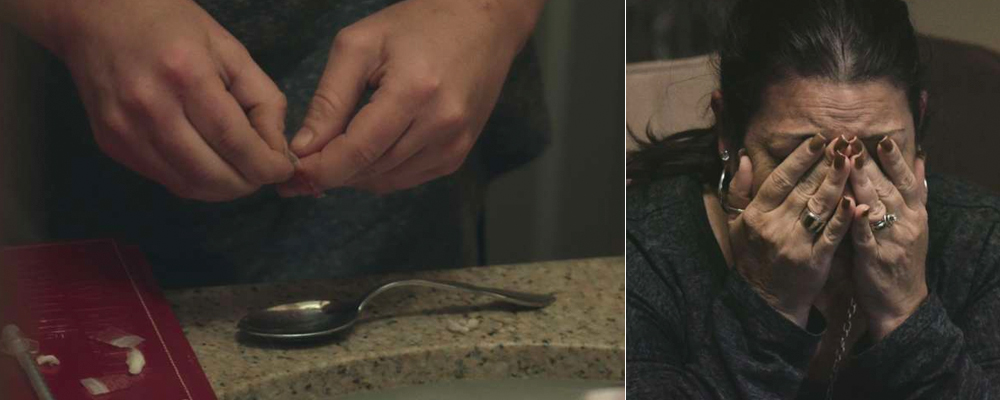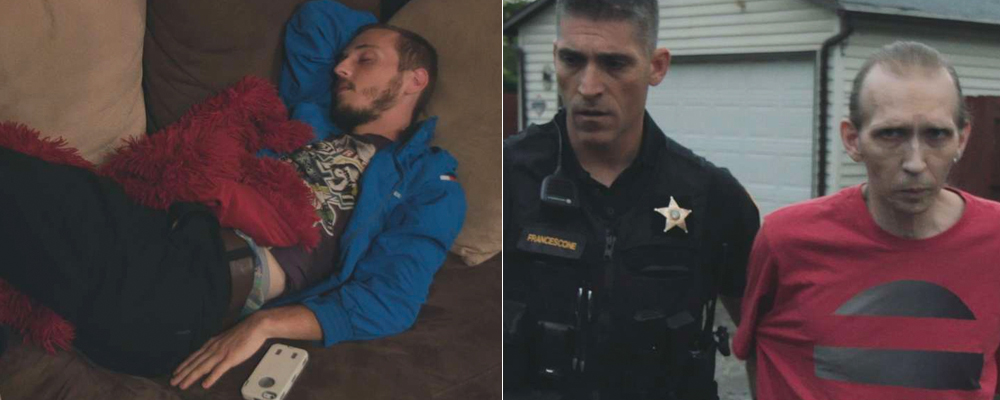Showtime’s ‘The Trade’ Is a Harrowing Journey Into the Drug Crisis
Alci Rengifo
When the news mentions “the opiate crisis” it sounds like a cold, official term. “The Trade“ is a harrowing journey into the underbelly beneath the headlines. It follows a series of lives scarred or profiting from the drug trade, laying bare the links between the U.S. and Mexico via the narcotics market while profiling lives torn asunder by addiction. Much of this series is unpleasant, but every episode is important. There are moments that horrifying, others that are simply tragic. Yet this isn’t a blame game series, instead it frames the drug crisis as a toxic outgrowth of poverty and hopelessness on both sides of the border.
The series flows in and out of settings in the United States and Mexico, focusing primarily on Columbus, Ohio and the Mexican state of Guerrero. Key figures include Columbus detective Mike Edwards, who works on hunting down drug dealers while coming face to face with the terrible stories of addiction and death plaguing local communities. In Guerrero we meet Don Miguel, a local official who oversees the local poppy trade while fending off encroaching, violent drug cartels monopolizing the market. Back in the U.S. we meet several addicts who have spiraled into tragic stories of abandonment and despair. Skyler and his girlfriend Laina spend their time wandering the streets, looking to score while Skyler’s parents suffer from dealing with their son’s addiction and its distortion of his personality.
It would be easy to categorize “The Trade” as mere true crime, but it is more than just entertainment. This is an urgent document about the state of a frighteningly large amount of people in the United States and the socio-economic situation south of the border. In one scene a radio report informs us that since the year 2000, 300,000 Americans have died from opiate abuse. Another statistic in the show reports that more Americans die now from drug abuse than from car crashes. What makes this series unique is that it doesn’t just present such figures, it then shows us quite literally the lives behind them. There is a visceral power to the way the series does not spare us the faces and ugly details. It is not a documentary centered on interviews. We are there with the detectives as they meet the addicts and their families. There are moments where the camera is alone with the addicts, showing them in their most private, tortured moments when the body demands the drug and they begin injecting themselves in the loneliness of a cheap motel. In one tense moment Skyler returns home, high, and fights with his parents who eventually call the police. It is a moment which captures the entire tragedy of drug addiction in a personal way. In another scene we meet an addict named Brittany who calls her dealer on camera, and we hear and see the entire exchange.
The director of the series, Matthew Heineman, gained renown for his documentary “Cartel Land,” which was a raw chronicle of the Mexican drug war. In “The Trade” he expands his scope and reach, presenting a wide and unforgettable canvas populated by personalities both tragic and fascinating. As with “Cartel Land,” Heineman somehow manages to get access into the most hidden and detailed aspects of the narco world. In the poppy fields workers collect the needed materials and complain about pay, a foreman reminds them that they could just grow corn, but then it would be difficult to make a decent living. There is a perverse fascination in moments where Heineman shows us workers mixing the chemicals needed to turn the poppy into drugs, and they discuss the chemical reactions with the insights of laboratory scientists. When the series crosses the border we see the drug dealers up close, with faces drained and shattered by the chemicals mixed down south. Heineman is also before anything a filmmaker. His visual style has a gritty energy, at times seeming picturesque in the way haunting war photographs elegantly capture something true and sad.
As presented by “The Trade,” the drug trade and its social consequences both feed off poverty and lack of opportunities. In Mexico the rural zones have become landscapes without development, and so the poor either migrate to the United States or make money by finding a place in the drug world. In the U.S. it is the shrinking middle classes consuming the cheaper, grittier drugs flowing into the streets. Skyler shares on camera how his own addiction began with expensive pain killers which he traded in for $20 pouches of heroin. There are moments that reminded me of the 2000 Steven Soderbergh film “Traffic,” which followed the drug trade’s course from Mexico to Washington, D.C. via a gallery of different characters.
In a season of great TV dramas, comedies and anthologies, “The Trade” stands out at as a work of great craft and urgency. It is a searing journey and a chronicle about what is happening right now in many, despairing lives. The human side of a crisis is laid bare. If we look away it is at our own peril.
“The Trade” premieres Feb. 2 at 9 p.m. ET and airs Fridays on Showtime.



